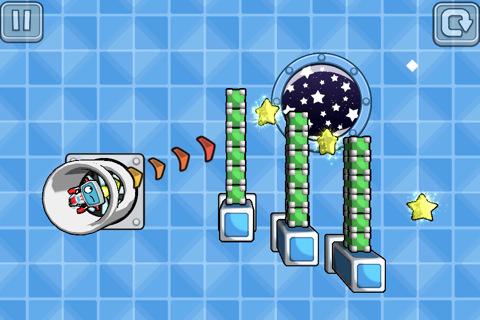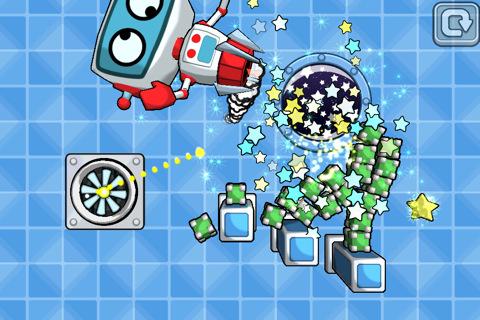- Wondering how to get Monopoly GO! free rolls? Well, you’ve come to the right place. In this guide, we provide you with a bunch of tips and tricks to get some free rolls for the hit new mobile game. We’ll …
The BEST Roblox Games of The Week – Games You Need To Play!
By Sho Roberts
Our feature shares our pick for the Best Roblox Games of the week! With our feature, we guarantee you'll find something new to play!Best Roblox Horror Games to Play Right Now – Updated Weekly
By Adele Wilson
Our Best Roblox Horror Games guide features the scariest and most creative experiences to play right now on the platform!Type Soul Clan Rarity Guide – All Legendary And Common Clans Listed!
By Nathan Ball
Wondering what your odds of rolling a particular Clan are? Wonder no more, with my handy Type Soul Clan Rarity guide.
Gravity Lab Review
It’s gotta be boring in outer space. Sitting around on what looks like a random space station, Steve the Robot is learning this lesson the hard way. Thankfully, though, there are stars floating around all over the place, and he’s just itchin’ to take them out. Hey, it beats being bored out of your robot skull.

Gravity Lab gives Angry Birds veterans a fresh new take on the genre
It’s gotta be boring in outer space. Sitting around on what looks like a random space station, Steve the Robot is learning this lesson the hard way. Thankfully, though, there are stars floating around all over the place, and he’s just itchin’ to take them out. Hey, it beats being bored out of your robot skull.
Steve is the star of Gravity Lab, a simple little physics puzzler that requires players to knock over piles of blocks in order to destroy stars that are scattered throughout various levels. This setup probably sounds familiar, and it should: the game will remind everyone who plays it of Angry Birds. That may sound like it’s a minor insult, but it’s only meant as a compliment. However, it’s actually a bit more challenging than Rovio’s hit title.
Steve only gets one chance at a time to knock out the stars, so his one shot has to count. On top of that, Steven can’t directly hit the stars, so he has to knock the blocks onto them. At first, players just have to figure out where to hit stacks of blocks and how hard of a shot needs to be made, but items like blocks with different gravity pulls (meaning they fall in different directions) trampolines, bombs, and zones that change a block’s gravity start to pop up in the levels, and getting rid of all the stars becomes increasingly difficult.
But challenging doesn’t mean impossible, and most of the levels are a lot of fun to play through. Occasionally a level pops up that’s more difficult than enjoyable, but for the most part things stay incredibly entertaining and it’s rare to spend more than a few minutes stuck on any one map.
The one real irritation with gameplay is the way that shooting Steve works. Players perform a finger drag to aim the robot and determine how fast he’ll be fired away from the fan he’s sitting atop. However, players have to drag their fingers in the same direction that Steven will fly, which means that their fingers sit atop the trajectory/velocity lines and obscure the view. It’s frustrating at times, because some of the levels require such careful shots that this can easily ruin things.


Visually, Gravity Lab is great. It features cel-shaded 3D graphics that look absolutely lovely when the game’s camera automatically zooms in to focus on the final star on a map (done for dramatic effect when blocks are getting close to making contact). The sound effects are also nice, though there’s no soundtrack to listen to.
Overall, Gravity Lab is an excellent little game that manages to do something with a genre that’s been all but played out for a while. It’s a lot of fun and incredibly entertaining. Plus, it contains 75 different levels to play through, so there’s a lasting appeal here. If physics puzzles are your thing, then you can’t afford to pass this title up.

The good

The bad
More articles...
Monopoly GO! Free Rolls – Links For Free Dice
By Glen Fox
Wondering how to get Monopoly GO! free rolls? Well, you’ve come to the right place. In this guide, we provide you with a bunch of tips and tricks to get some free rolls for the hit new mobile game. We’ll …The BEST Roblox Games of The Week – Games You Need To Play!
By Sho Roberts
Our feature shares our pick for the Best Roblox Games of the week! With our feature, we guarantee you'll find something new to play!Best Roblox Horror Games to Play Right Now – Updated Weekly
By Adele Wilson
Our Best Roblox Horror Games guide features the scariest and most creative experiences to play right now on the platform!Type Soul Clan Rarity Guide – All Legendary And Common Clans Listed!
By Nathan Ball
Wondering what your odds of rolling a particular Clan are? Wonder no more, with my handy Type Soul Clan Rarity guide.







